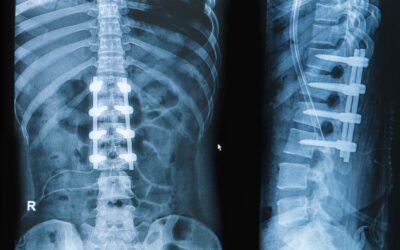What exactly is Sciatica?
Sciatica. Have you heard of it? You may have even suffered from it or you thought you have…
The interesting thing about “sciatica” is it has become an umbrella term for people suffering from back or leg pain.
It’s probably not what you think it is.
As a practitioner, I can say that most of the people who come in with a referral for sciatica, or self-diagnosed themselves with sciatica, don’t actually have sciatica.
Sciatica is defined as pain that radiates along the path of the sciatic nerve. The sciatic nerve travels from the low back, through the pelvis, down the back of the leg towards the back of the knee where it splits into different nerves that travel down the lower leg.
In the clinic, people describe their pain as sciatica if they have pain radiating down their leg or legs. Sciatica symptoms are one sided. People frequently describe the pain as a deep burning or aching in the buttock. They can suffer from numbness and tingling as well.
As mentioned earlier, sciatica is commonly misdiagnosed. Most of the time people are actually suffering from radiculopathy or radicular symptoms, which also produce pain down your leg. Technically sciatica can be diagnosed as radicular or radiculopathy.
Radicular symptoms are related to the nerve root.
Radiculopathy relates to the function or role of the nerve. Meaning what the nerve actually does. If you’re suffering from radiculopathy pain this can lead to symptoms like weakness, decreased sensation, and diminished reflexes.
The key difference between sciatica and similar pain down your leg is the nerve involved. There are many nerves that originate in the low back and any of them can cause symptoms in the leg. Sciatica symptoms are specific to the sciatic nerve. Piriformis syndrome, SI joint dysfunction, and spinal arthritis can all cause similar aches and pains.
Pain, numbness, and tingling down your leg can be due to nerve compression or irritation. Specific to sciatic nerve compression or irritation would be located along the lumbar spine, where the sciatic nerve originates. The sciatic nerve innervates the hamstring muscles (the muscles in the back of your leg), which is why the pain or numbness is felt along the back of the thigh. These muscles originate along the pelvis, near the bony spot in your buttock. This can help explain why people suffer from deep aching or burning in this area.
Cause
Some examples of causes of sciatica could be a herniated or bulging disc, spinal stenosis, lumbar or pelvic muscle spasm or inflammation.
Herniated or bulging discs are very common. Fortunately, they are not always the cause of your symptoms. For example, herniated and bulging discs are commonly to blame for sciatica, but they actually only produce sciatica symptoms 5% of the time.
Here are a few common sciatica myths.
Sciatica Myth Vs. Truth
1. “I have sciatica, so I need an X-ray or MRI ASAP!!”
A lot of people believe that they need imaging when suffering from back pain, specifically sciatica.
The truth is you don’t necessarily need imaging.
If you have abnormal findings on your X-ray or MRI, that doesn’t directly correlate to sciatic pain. In other words, it’s not necessarily the cause of your pain. Your imaging does not determine or define your symptoms.
Here are a couple of statistics for you.
- 80 out of 100 people over the age of 50 have disc degeneration without pain.
- 30% of 20-year-olds, 60% of 50-year-olds, and 84% or 80-year-olds ALL have “disc bulging”.
Let me be clear, NOT ALL of these people are not suffering from pain.
To be honest, they’re probably not even aware that they have a bulging disc. They’re out there running, playing pickleball, weight lifting, taking yoga classes, and doing all the things without interruptions or limitations due to pain. The truth is some of these changes are part of the aging process. Just like we get gray hair and wrinkles, we have these changes on the inside too
2. If you have sciatica you should stay in bed and rest.
First off, no. Just no. 
Secondly, you’re probably not doing this anyways. You’re a mom, a college student, a mechanic, a teacher. You can’t afford to just “sit and rest” and wait for the pain to go away. You have things to do. A life to live.
Third, the best thing to do is move. I’m sure you’ve already googled the best exercises and stretches for sciatica. Maybe you tried these exercises. Maybe they were painful. I’m going to go out on a limb and say that unfortunately you’re probably still suffering.
Even with a sciatic diagnosis, each patient’s symptoms are a bit different! That’s why it’s important to see a Physical Therapist to assist you in determining what exercises and stretches will help alleviate your pain and get your life back.
3. Surgery is the only way to fix me.
Take a step back! Let’s talk about this before we consider something huge like surgery…especially for sciatica and leg pain.
For starters, you might not even be suffering from sciatica.
Just like I mentioned in the “should I stay in bed and rest?” section, you should contact a Physical Therapist and get an evaluation to help determine the cause of your symptoms and the best treatment option. Even if you do head to the doctor, they’re probably going to refer you to Physical Therapy. Or, at least, research is showing they should.
Save yourself the time, trip, and copay, and give us a call. You don’t need a doctor’s referral to come into Physical Therapy.
Lastly, multiple studies support improvement in symptoms with conservative (non-operative) treatment.
Treatment
Sciatica is a clinical diagnosis, so it requires evaluation by a healthcare professional to help determine the cause and appropriate treatment plan.
On the bright side, most cases will resolve within 4-6 weeks even without medical intervention.
The benefit of seeking help is to avoid further loss of strength, range of motion, and function and to assist with pain management.
If that doesn’t convince you, how about the fact that we can help decrease your suffering and allow you to perform your daily and recreational activities with decreased difficulty? 
Rest is never the answer, but you may be in so much pain that you think all you can do is rest.
Before you get that pillow and cozy blanket ready to rest. Try one more thing… give us a call. Give us a chance to convince you otherwise!
We have the time to take a closer look into your individualized care that other physical therapists wouldn’t do. Your pain is not the end of the road. You still have the chance at getting back to doing the things you love!
Give us a call at (480) 452-9191 or sign up for a free consult to see if we are the right healthcare provider for you!
References
https://www.ncbi.nlm.nih.gov/books/NBK507908/
https://www.spineuniverse.com/conditions/sciatica/6-little-known-facts-about-sciatica




